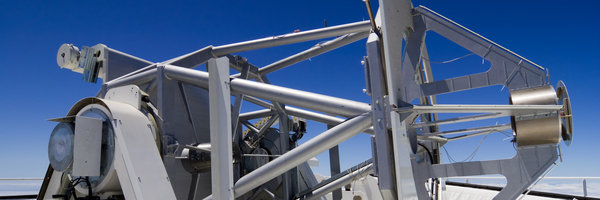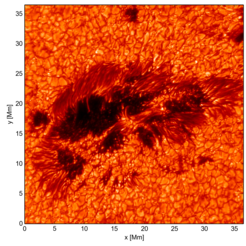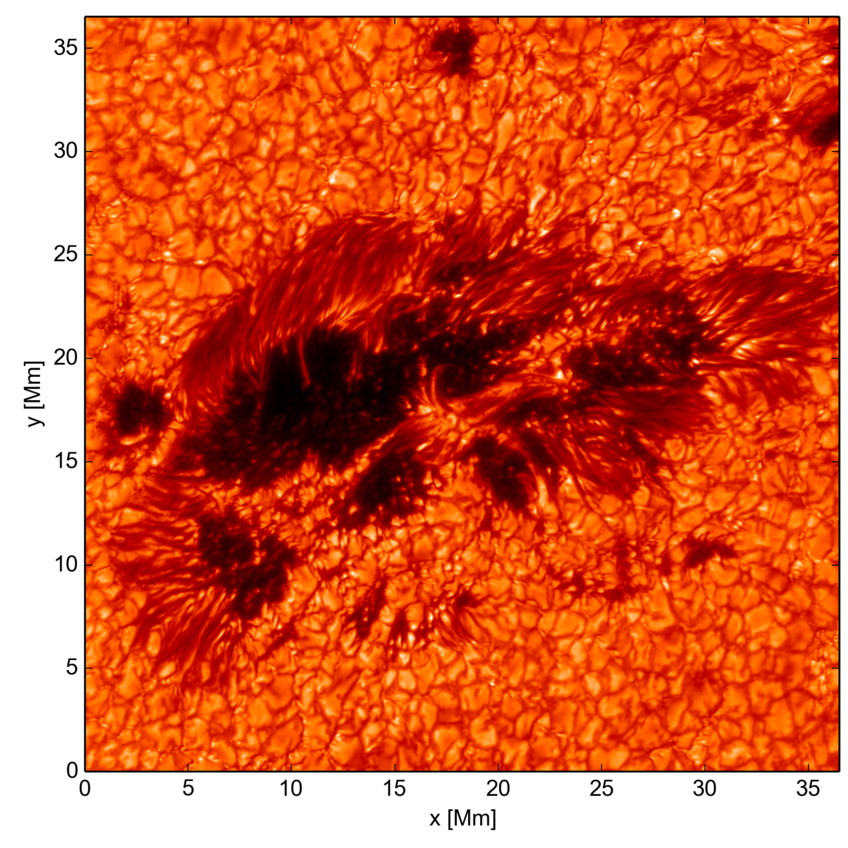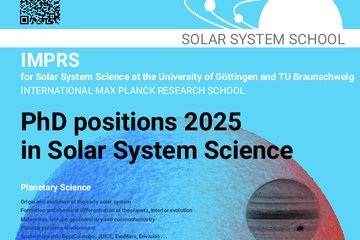
GREGOR
The solar telescope GREGOR is designed to observe the solar photosphere and chromosphere in the visible and the near-infrared wavelengths. The main mirror with a diameter of 1.5m allows for solar images of unprecedented quality and resolution. It enables the largest European solar telescope to study processes in the solar atmosphere at smallest spatial scales down to only 70 km.
GREGOR was built as an ''open'' telescope: the natural air flow cools the open telescope structure without introducing turbulences and vibrations, which would decrease the image quality significantly. Additionally, atmospheric turbulences are compensated by a newly developed adaptive optics system, which measures and corrects for the aberrations of the incoming wavefront in real-time.
Scientific observing campaigns with GREGOR can use various instruments. Cameras with large CCDs will observe the visible light of the Sun in great detail. Two other instruments analyze the solar spectrum at different wavelengths: a spectrograph allows for observations in the infrared, and a interferometer delivers narrow-band images to probe different height layers in the solar atmosphere. By using these instruments scientists will gain maps of the magnetic field on the surface of the Sun. The great detail of these maps will for the first time allow for a one to one comparison between observational data and theoretical predictions by computer simulations.

Active Region observed on June 14, 2013 with the Broad Band imager at the GREGOR telescope.
GREGOR is one of the three German solar telescopes at the Teide observatory on Tenerife (Spain), operated by the Instituto de Astrofísica de Canarias (IAC). The GREGOR project is lead by the Kiepenheuer-Institut für Sonnenphysik (KIS) in Freiburg. The Max-Planck-Society, represented by the MPS, and the Leibniz-Institut für Astrophysik Potsdam (AIP) have a share of 20% each in the solar observations.












